Welcome to our comprehensive guide on swimming in 2023. Swimming is not just a sport; it’s a vital life skill, a form of exercise, and a passion for many. In this article, we’ll take you through the definition, history, various swimming strokes, and some intriguing facts about this incredible aquatic activity. Whether you’re a seasoned swimmer or a curious beginner, there’s something for everyone to learn and enjoy.
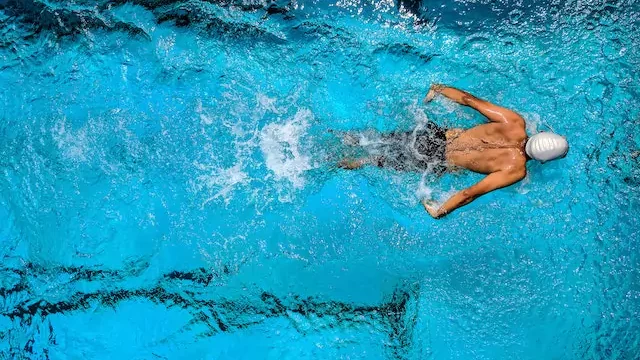
Swimming Definition Sport
Swimming is the act of moving through water by using the body’s limbs. It is a popular form of exercise and recreation, and it is also an important skill for survival.
The definition of swimming can be summarized as follows:
- Swimming is the act of moving through water by using the body’s limbs.
- Swimming can be done for recreation, exercise, or competition.
- Swimming is a low-impact exercise, which means it is easy on the joints.
- Swimming can help to improve cardiovascular health, muscle strength, and flexibility.
- Swimming is a good way to cool off in hot weather.
- Swimming is a great way to socialize and meet new people.
The History of Swimming
Swimming is one of the oldest human activities. The earliest evidence of swimming dates back to the Stone Age, when people used swimming to hunt and gather food. Swimming became a popular form of recreation in ancient Greece and Rome. The first swimming competitions were held in the 1800s.
Early History of Swimming
The earliest evidence of swimming dates back to the Stone Age, when people used swimming to hunt and gather food. They would swim in rivers and lakes to catch fish and other animals. This sport was also used as a way to cross rivers and bodies of water.
Swimming in Ancient Greece and Rome
Swimming was a popular form of recreation in ancient Greece and Rome. The Greeks believed that swimming was a healthy activity that could improve physical fitness and mental clarity. The Romans built public baths where people could swim and bathe.
Swimming in the Middle Ages
Swimming declined in popularity during the Middle Ages. This was due in part to the belief that swimming was a dangerous activity. However, swimming continued to be practiced by some people, such as sailors and fishermen.
Swimming in the Modern Era
Swimming became a popular sport in the 19th century. The first swimming competitions were held in the 1800s.It was also included in the first modern Olympic Games in 1896.
Swimming Today
Swimming is a popular sport and recreational activity today. It is also used as a form of therapy for people with disabilities. Swimming is a great way to stay fit and healthy. It is a low-impact exercise that is easy on the joints. Swimming can also help to improve cardiovascular health, muscle strength, and flexibility.
Swimming Olympics History
Swimming has been a part of the Olympic Games since the first modern Games in 1896. It is one of only four sports to have been featured in every Summer Olympics.
- Early History of Swimming in the Olympics: The first swimming events at the Olympics were held in the open water of the Bay of Piraeus, Greece. The events were only open to men, and only freestyle races were held.
- Swimming in the Modern Era: Swimming became a more popular sport in the 20th century. The number of events at the Olympics increased, and women were finally allowed to compete in swimming.
- Swimming Today: Swimming is one of the most popular sports at the Olympics. There are now 35 swimming events at the Games, including freestyle, backstroke, breaststroke, butterfly, and individual medley races.
Swimming Benefits
It is a great way to stay fit and healthy. It is a low-impact exercise that is easy on the joints, and it can provide a full-body workout. Swimming has many benefits for both physical and mental health.
Physical Benefits of Swimming
- Improved cardiovascular health: Swimming is a great way to improve your heart and lungs. It can help to lower your blood pressure, cholesterol, and risk of heart disease.
- Increased muscle strength and flexibility: Swimming can help to build muscle and improve flexibility. It is a good way to tone your arms, legs, core, and back.
- Weight loss: Swimming can help you to lose weight or maintain a healthy weight. It is a calorie-burning exercise that can help you to burn more calories than other activities, such as walking or running.
- Improved joint health: Swimming is a low-impact exercise, which means it is easy on the joints. This makes it a good option for people with arthritis or other joint problems.
- Reduced stress and anxiety: Swimming can help to reduce stress and anxiety. The calming effect of the water can help to relax the mind and body.
- Improved sleep: Swimming can help to improve sleep quality. The physical exertion of swimming can help to tire you out, making it easier to fall asleep at night.
Mental Benefits of Swimming
- Improved mood: Swimming can help to improve mood and reduce symptoms of depression and anxiety. The physical exertion of swimming can release endorphins, which have mood-boosting effects.
- Increased self-esteem: Swimming can help to improve self-esteem and confidence. It is a challenging activity that can help you to set and achieve goals.
- Improved social skills: Swimming is a great way to socialize and meet new people. It is a fun and active activity that can be enjoyed by people of all ages and abilities.
Swimming for Kids
- Improved physical fitness. Swimming is a great way to get exercise and stay fit. It is a low-impact exercise, which means it is easy on the joints. Swimming can help kids to build muscle, strength, and endurance.
- Improved cardiovascular health. Swimming can help to improve cardiovascular health by strengthening the heart and lungs. This can help to reduce the risk of heart disease and stroke.
- Improved flexibility. Swimming can help to improve flexibility by stretching the muscles and joints. This can help to prevent injuries and improve athletic performance.
- Weight loss or management. Swimming can be a great way to burn calories and lose weight or maintain a healthy weight.
- Reduced stress and anxiety. Swimming can be a relaxing and calming activity. It can help to reduce stress and anxiety, and improve mental health.
- Improved social skills. Swimming is a great way for kids to socialize and make friends. It can help them to develop teamwork and communication skills.
- Water safety. Learning to swim is an essential water safety skill. It can help to prevent drowning, which is a leading cause of death for children.
Types of Swimming Strokes
Swimming is a great way to get exercise and stay fit. It is a low-impact exercise, which means it is easy on the joints. This sport can also help to improve cardiovascular health, muscle strength, and flexibility. There are many different swimming strokes, each with its own advantages and disadvantages.
Freestyle
The freestyle is the most basic swimming stroke. It is a fast and efficient stroke that is used in most swimming competitions. The freestyle is performed by alternating arm strokes and leg kicks. The arms are swept forward in a circular motion, and the legs are kicked in a flutter kick.
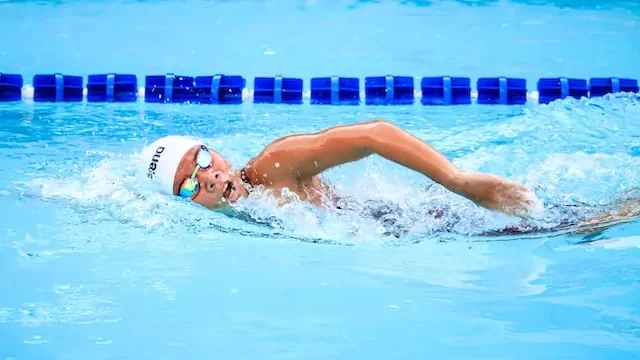
Backstroke
The backstroke is a swimming stroke in which the swimmer swims on their back. It is a slower stroke than the freestyle, but it is easier on the shoulders. The backstroke is performed by alternating arm strokes and leg kicks. The arms are swept back in a circular motion, and the legs are kicked in a flutter kick.
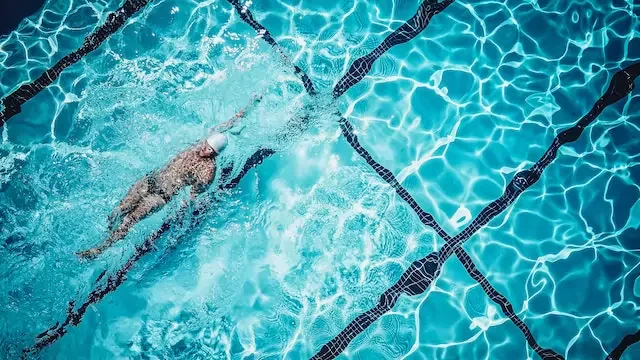
Breaststroke
The breaststroke is a swimming stroke in which the swimmer swims on their chest. It is a slow stroke, but it is a good way to build upper body strength. The breaststroke is performed by bringing the arms forward together in a sweeping motion, and then pushing them back together. The legs are kicked in a frog kick.
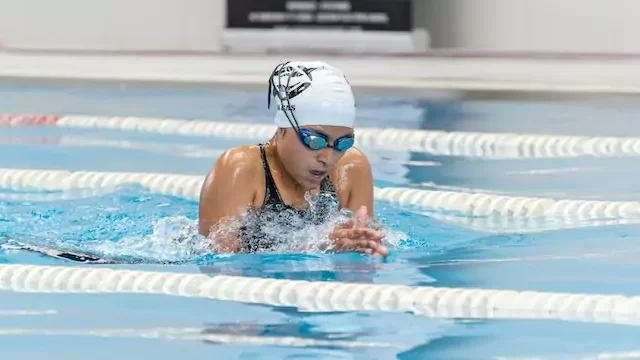
Butterfly
The butterfly is a swimming stroke in which the swimmer uses their arms and legs to propel themselves through the water. It is the fastest swimming stroke, but it is also the most difficult to learn. The butterfly is performed by bringing the arms forward together in a sweeping motion, and then pushing them back together. The legs are kicked in a dolphin kick.
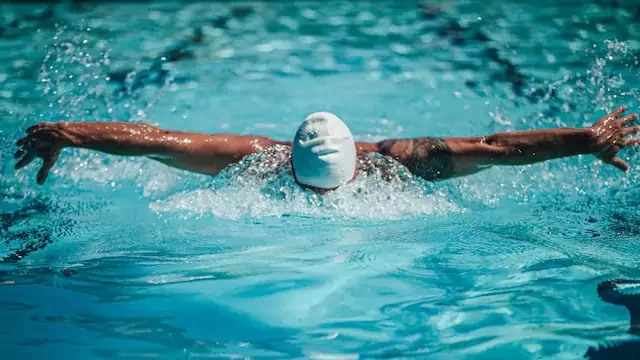
Individual medley (IM)
The IM is a swimming race that consists of four different strokes: freestyle, backstroke, breaststroke, and butterfly. The IM is a challenging race that requires swimmers to be proficient in all four strokes.
Result
- The text is about swimming, which is a great way to stay fit and healthy.
- Swimming is a low-impact exercise, which means it is easy on the joints.
- Swimming can also help to improve cardiovascular health, muscle strength, and flexibility.
- The earliest evidence of swimming dates back to the Stone Age.
- Swimming became a popular form of recreation in ancient Greece and Rome.
- The first swimming competitions were held in the 1800s.
- There are many different swimming strokes, each with its own advantages and disadvantages.
- Some of the most common swimming strokes include freestyle, backstroke, breaststroke, butterfly, and individual medley (IM).
FAQs
How many calories can I burn swimming?
The number of calories you burn swimming depends on a number of factors, including your weight, intensity of swimming, and duration of swimming. In general, you can burn about 400-800 calories per hour swimming.
What are the best swimming strokes for beginners?
The best swimming strokes for beginners are the freestyle and backstroke. These strokes are relatively easy to learn and can be used to get a good workout.
What are the risks of swimming?
The risks of swimming include:
- Drowning
- Hypothermia
- Water pollution
- Sunburn
- Ear infections
What is the best swimming stroke for beginners?
The best swimming stroke for beginners is the freestyle. The freestyle is the easiest stroke to learn and it is a good way to build basic swimming skills.




